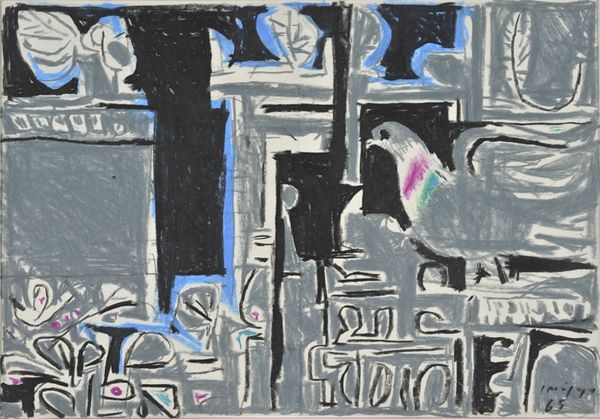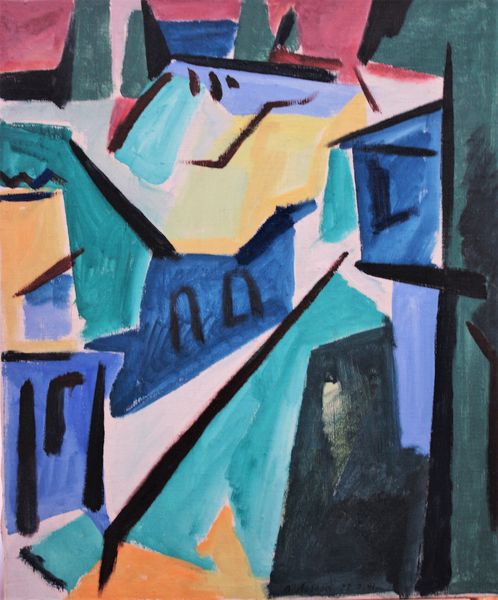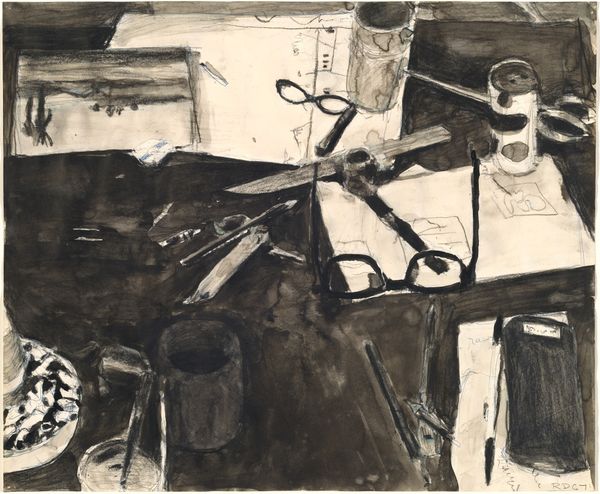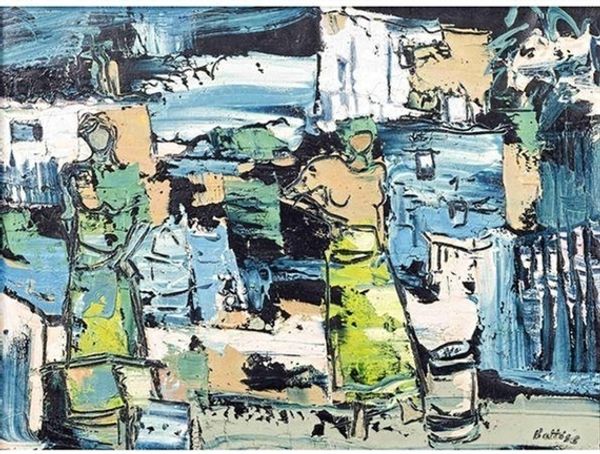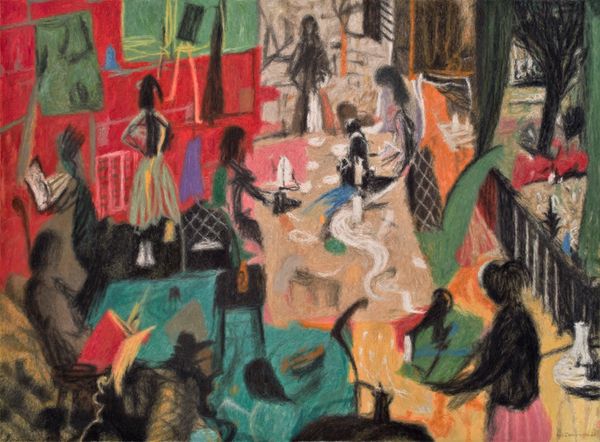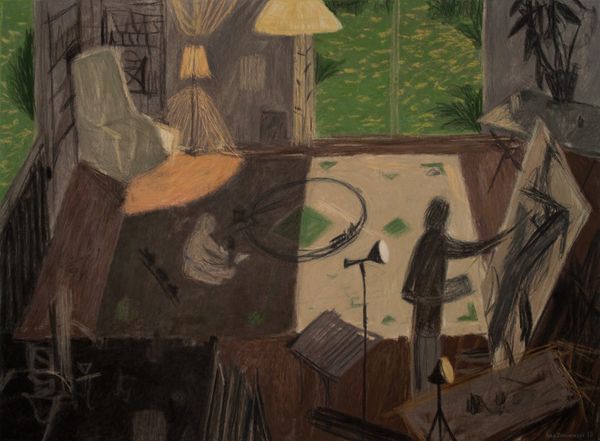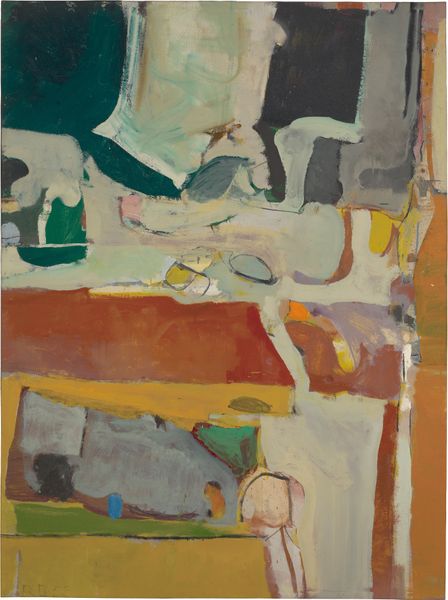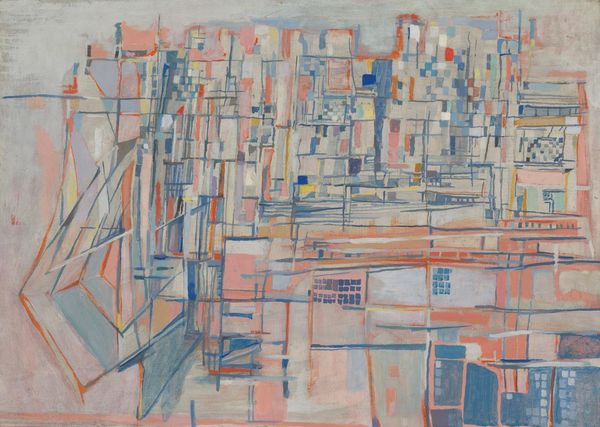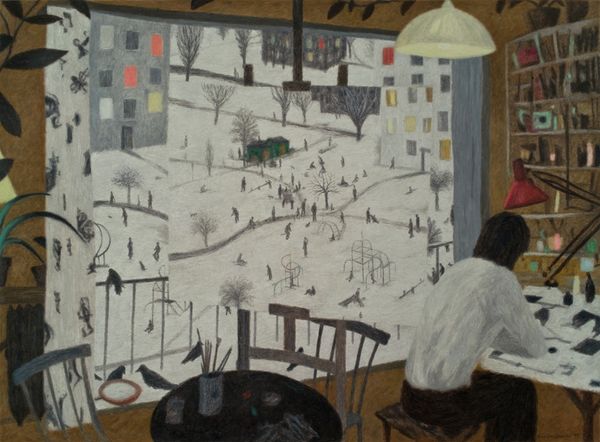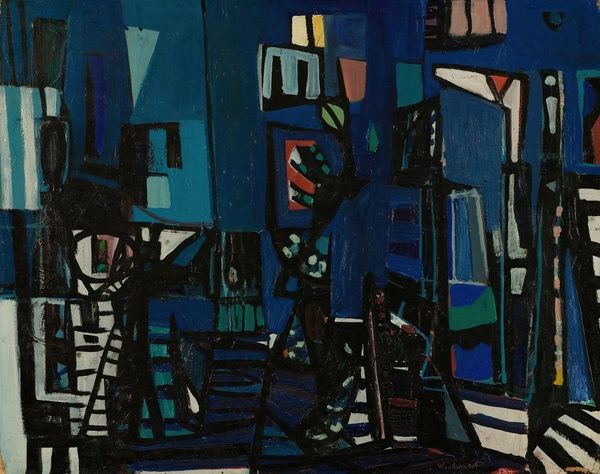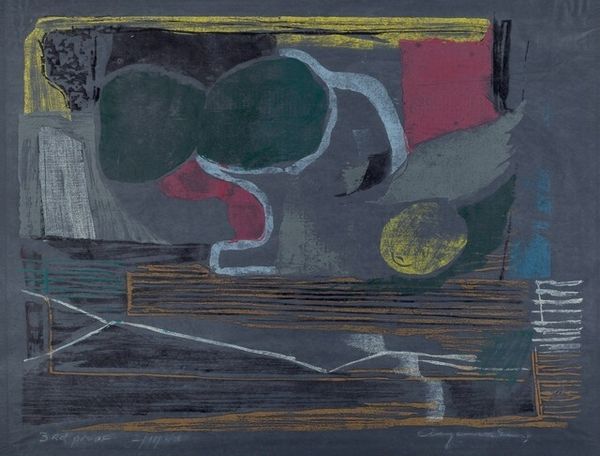
drawing, paper, ink
#
drawing
#
figuration
#
paper
#
ink
#
geometric
#
modernism
Copyright: Yiannis Moralis,Fair Use
Editor: This is "10 colored drawings for the poems of George Seferis," a 1965 drawing by Yiannis Moralis. It’s rendered in ink on paper, and I'm struck by its somewhat somber and abstract figuration. It reminds me a little bit of a café scene. What jumps out at you? Curator: Well, looking at this from a materialist perspective, I see a deliberate exploration of the production and consumption of imagery itself. The ink, the paper—these are accessible, mass-produced materials. Notice how the geometric shapes almost flatten the figures, turning them into patterns within a consumer space, the cafe you mentioned. Does this speak to a certain social reality of 1960s Greece, perhaps? Editor: I hadn't thought of it that way, but it's interesting you say that. The drawing does seem to deliberately avoid idealizing anything; it feels almost… practical. The way the artist uses fairly common supplies also makes me think about labor: his, and potentially, in relation to the cafe scene depicted. Curator: Exactly. And that practicality pushes back against the more precious aura often associated with "high art." How do the specific artistic *choices* – the ink, the paper, the flat planes of color - shape our understanding of the people represented within the drawing? Are they celebrating leisure, or merely participating in another form of work, the social consumption of public life? Editor: That's a fascinating question. I initially just saw a café, but your point about labor and the flattening of the figures changes everything. It's not just a scene; it’s a commentary on social structures. Curator: It makes us question the traditional boundaries of art and lived experience. Considering materials and process pushes us to think about whose stories get told, and *how*. Editor: Right. I’ll definitely look at Moralis’s work differently now, thinking more about the choices made in terms of material and what social context that evokes. Curator: And how these choices invite us to engage critically with what’s represented. That’s what makes art history exciting!
Comments
No comments
Be the first to comment and join the conversation on the ultimate creative platform.

